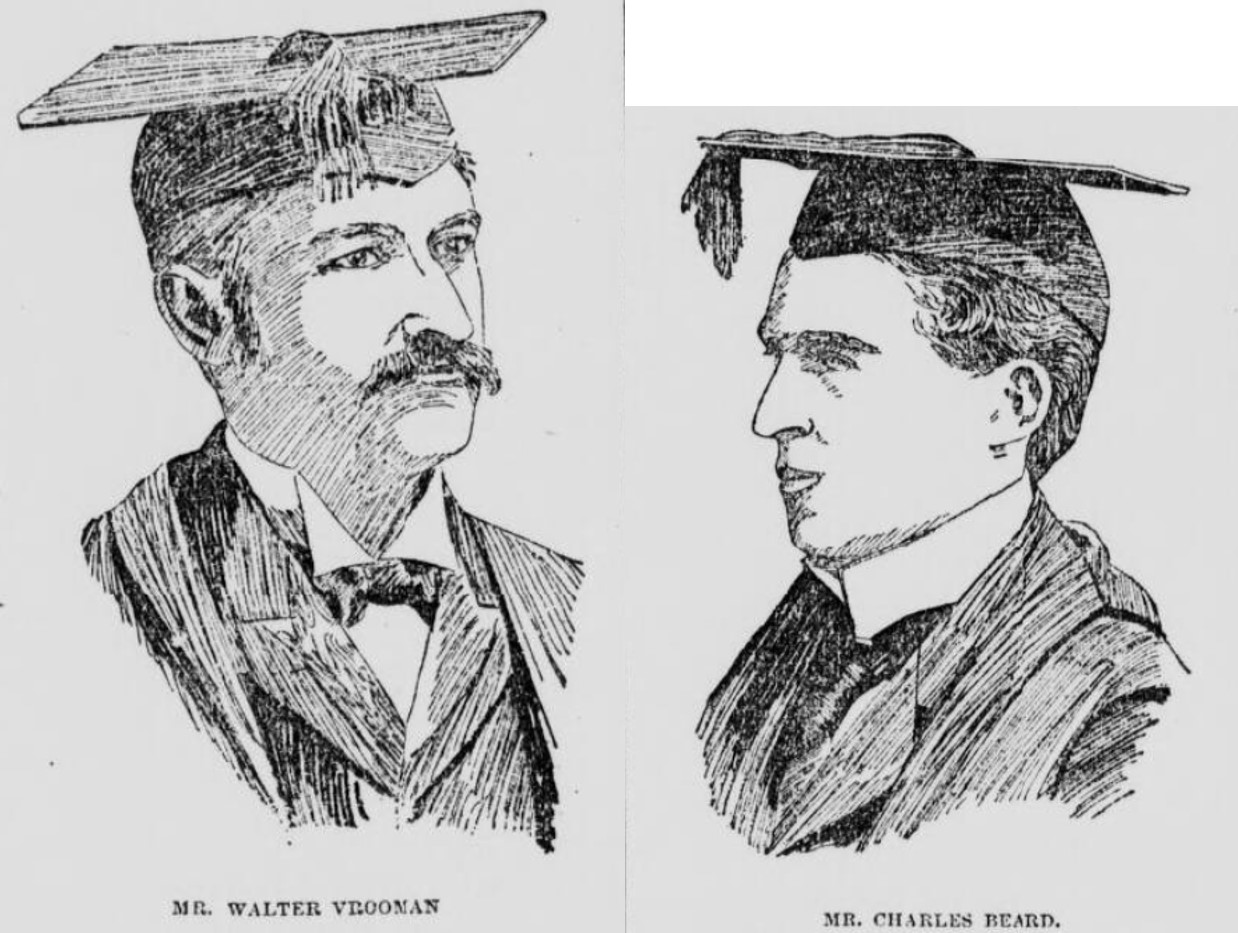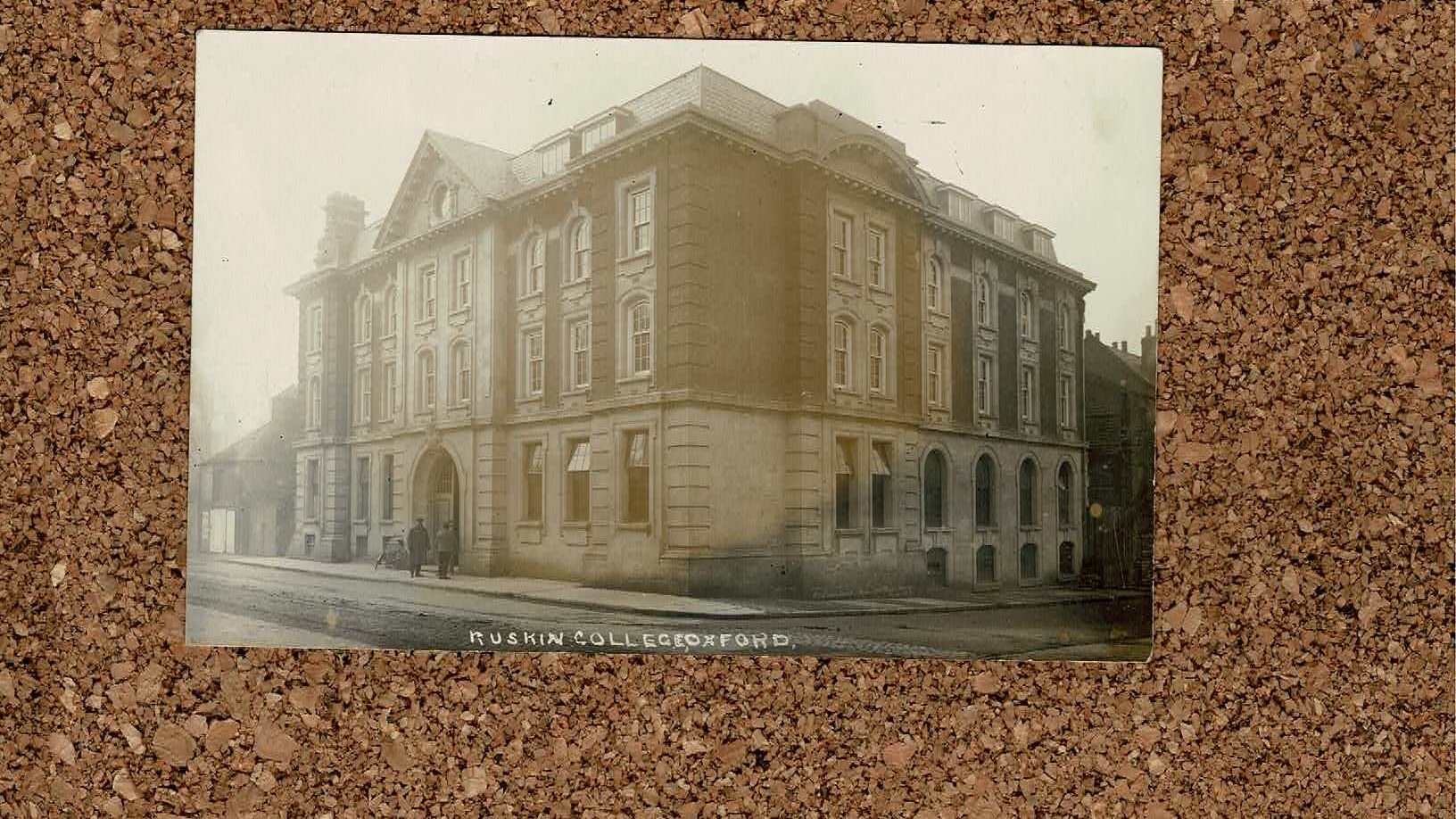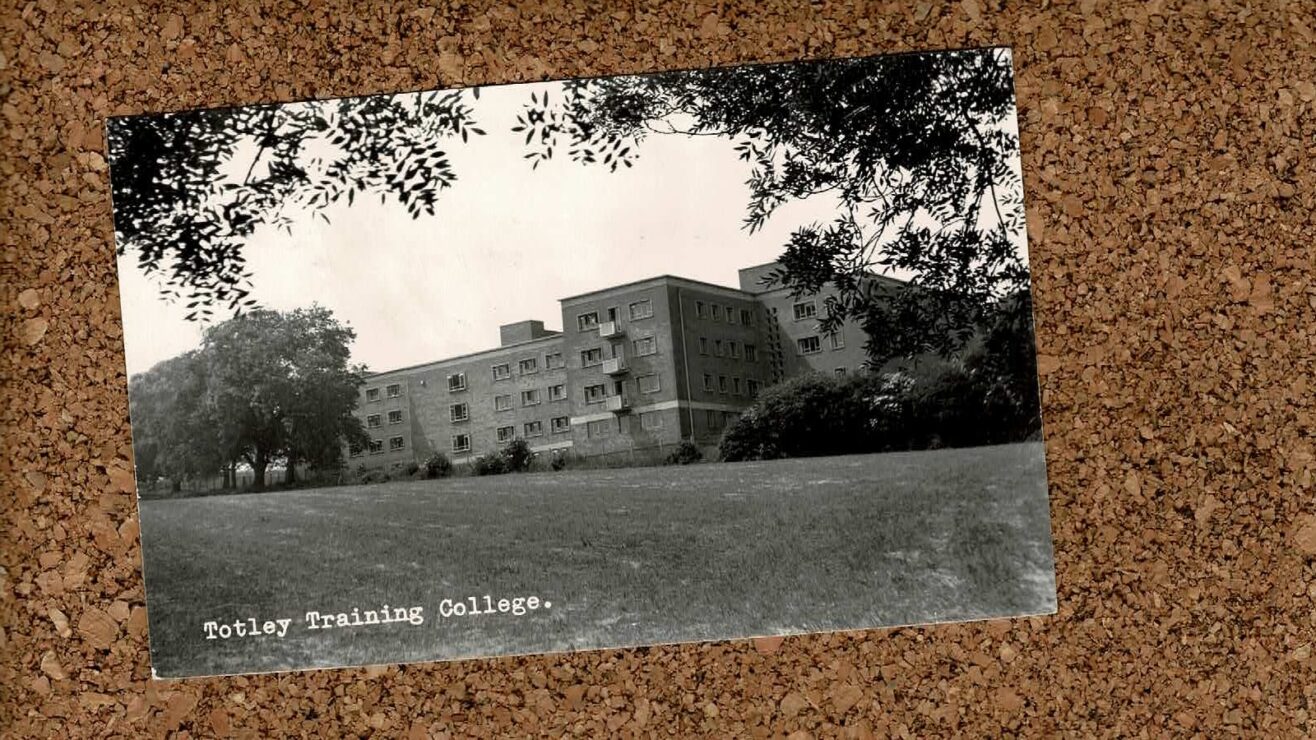Greetings from Oxford!
This week we’re coming from Walton Street, just down from Worcester College, to tell a tale of nineteenth century social reform.
We start with two idealistic Americans: Charles A Beard and Walter Vrooman. Both had studied at Oxford, and were filled with a zeal to make the benefits of a good education open to people from the working classes. They planned to open a college in Oxford.

Here’s Vroonan and Beard, as depicted in the Oxford Journal, 25 February 1899. Both Vrooman and Beard later returned to the US: Beard became a professor of History at Columbia; Vrooman established a second Ruskin College in Trenton, Missouri. Vrooman died in 1909, the second Ruskin College foundered in 1919.
Vrooman, fortunately for the scheme, had married into wealth. His wife, Amne Vrooman, was able to subsidize the planned College. And on 22 February 1899 Ruskin Hall (named for the polymath John Ruskin) was opened with great fanfare.
The Oxford Journal reports that:
Among the societies and unions represented were The Amalgamated Society of Engineers, Operative Bricklayers’ Society, National Union of Dock Labourers in Great Britain and Ireland, London Society of Compositors, Dock, Wharf, Riverside, and General Labourers’ Union of Great Britain and Ireland, Leicester and Leicestershire Amalgamated Hosiery Union, Postal Telegraph Clerks’ Association, General Railway Workers’ Union, Bedstead Workmen’s Association, Lancashire Labourers and Gasworkers’ Union, Cardiff, Penarth and Barry Coal Trimmers’ Union, Amalgamated Tube Trade Society, Chairmakers’ Union, London Tailors’ Society, Women Workers of Liverpool, Long Heaton Working Men’s Co-operative Society, Accrington Co- operative Society, Oxford Co-operative Society, Ox- ford Co-operative Builders and Decorators; the Trades’ Councils represented included London, Birmingham, London Building, Manchester and Salford, Leicester, Bradford, Bristol, Midland Counties, Trades Federation. Mexborough. Northampton. North Staffordshire, Norwich, Swindon, Oxford, Worcester and Reading. The total number of Trades’ Unionists represented by separate organisations was 108,206, and of Trades’ Councils, 195,897.
Look at the names of these unions. There is, without a shadow of doubt, romance in the labour movement. Certainly, more romance that there is helpful punctuation in the Oxford Journal.
According to Walter Vrooman’s inaugural address, within 5 months of the project being mooted, there were over 200 corresponding students, as well as those who attended the college. Initially it occupied rooms at St Giles rented from Balliol College; the building on Walton Street, shown on the card, became the College’s home in 1912.
Ruskin Hall – which became Ruskin College in 1900 – had a complex relationship with the University. Students were from 1910 able to take the University’s Diploma in Economics and Political Science; but equally in 1921 the College declined an offer from the University that its students become members of the University. Nevertheless, the College was part of university life. In 1924, for example, when the University had banned Marie Stopes’ lecture on birth control, she instead spoke at Ruskin College.
The College was a training ground for radicals, and this showed itself within the College. The 1930s found Ruskin hosting further banned debates from Oxford University; joining in with striking steelmen; joining the International Brigade, and, in the apotheosis of direct action, striking to demand boiled eggs at breakfast, which had been refused by the College’s Matron, Clara Adams. The Principal conceded in the face of direct action.

Some eggs, yesterday (Image: Shutterstock)
The College continued its work, and after the second world war purchased an additional site, in north Oxford. Additional buildings, over time, were built on this site; by 2009 it had become the main campus for Ruskin. And the Walton Street site was sold to Exeter College.
Trades’ Unions were involved in Ruskin from the outset, as the list of attendees at the inaugural meeting shows. At that same meeting, a council of three trades unionists was elected to serve as a board of trustees: Mr Bowerman of the London Society of Compositors; Mr Sellicks of the Amalgamated Society of Engineers, and Mr Tillett of the Dock, Wharf, Riverside, and General Labourers’ Union of Great Britain and Ireland. This connection continued. In 1925 the Trades’ Union Congress (TUC) sought to take over Ruskin College; in 1963 it did take over the provision of correspondence courses by Ruskin.
Ruskin thrived throughout the 1980s and 1990s, in very hostile times for anything connected with Trades Unions. By then it had educated a Prime Minister (Attlee) and a Deputy-Prime-Minister (Prescott) as well as numerous MPs, and radical leaders in other countries. Its programmes included undergraduate and master’s provision, and after the apprenticeship levy, a range of apprenticeship opportunities.
In the early 2000s a plan was hatched to bring together all of Ruskin’s activities on one site in north Oxford, but it came to nothing. More recently, the world has caught up with an institution which always sat outside the mainstream. In 2021 it became part of the University of West London.














It’s had a brutal few years under extremely poor leadership and thankfully has been taken over by a uni and not an fe college.